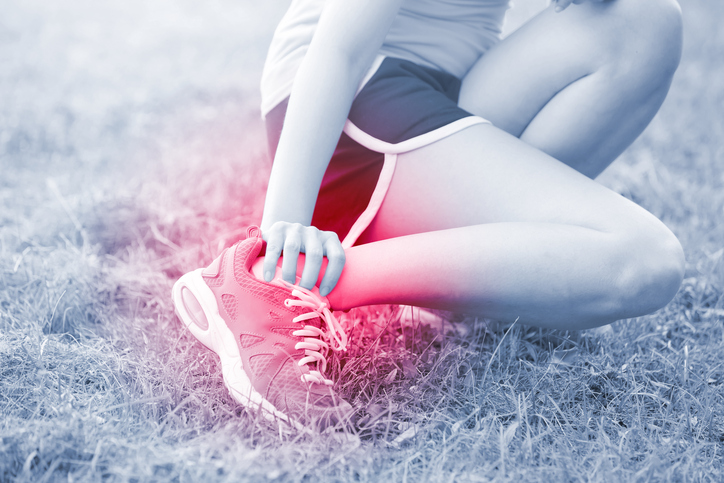 We’ve all heard Life Alert’s® trademark, “I’m falling and I can’t get up,” which we associate with ‘old age’, and the misconception that falling is not a risk for the ‘young’ or those who don’t live around areas of hidden ice. The fact is, however, that falling is a common mishap that can happen to anyone at anytime due to a multitude of factors and can often lead to a serious injury.
We’ve all heard Life Alert’s® trademark, “I’m falling and I can’t get up,” which we associate with ‘old age’, and the misconception that falling is not a risk for the ‘young’ or those who don’t live around areas of hidden ice. The fact is, however, that falling is a common mishap that can happen to anyone at anytime due to a multitude of factors and can often lead to a serious injury.
According to FloridaHealth.gov, unintentional falls are the leading cause of injury death among Florida residents ages 65 years and older and the fourth-leading cause of injury death overall. In addition, falls are the leading cause of non-fatal injury related hospital admission in Florida. In 2012, 2,475 residents were fatally injured in a fall; there were an additional 62,541 hospitalizations for non-fatal injuries. These high statistics of fall injury or deaths is something to take serious… so why is it that we’re still having such high fall-related statistics annually? We need to first understand how humans stay vertical before we can lower the fall risk.
A person requires at least two of the three following senses to maintain balance while standing:
- proprioception – the ability to know one’s body position in space;
- vestibular function – balance and the ability to know one’s head position in space;
- vision – what we can physically see around us.
When one or more of these senses are failing, usually we don’t hesitate to see a doctor for treatment, as it will affect every day activities. However, what we don’t always catch is the other risk factors in which affect our balance.
3 Common Factors Contributing to Falls:
- Poor Mobility & Flexibility
Poorly coordinated movement patterns, limited hip rotation, and inability to pick up your feet causing a “shuffling” gait pattern are factors against staying grounded particularly when turning quickly or encountering uneven or unexpected surfaces like a pothole. Neuropathy is another common factor that many Americans suffer secondary to diabetes and other diseases.
- Fear of Avoidance
We are wired to avoid activities that may put us at risk. But often a past traumatic event, such as rolling an ankle during a walk in the woods, can cause a fear in which negatively affects us more than the injury itself. The negative response to ‘never walking on the trails again’ may prevent another trip-and-fall on a root, however this avoidance to hiking on trails will soon stop you from walking on the beach, gardening, as so forth. “How this is related to falls?” Simple… our bodies adapt to our surroundings. We gain agility, coordination, strength, and balance each time we challenge ourselves physically. So don’t stop yourselves from doing what you love because of a past experience, but ease back into it safely!
Here is an interesting read from the New York Times about facing the fear of falling from Dutch physiotherapists: https://www.nytimes.com/2018/01/02/world/europe/netherlands-falling-elderly.html
3) Medications
As we’re well aware, the United States has a major prescription drug problem. Each medication has side effects, so in turn, more medications are often added to treat them, leaving us with significantly impaired senses. So it is important to talk to your doctor if you think your balance is being affected by your medications. Remember falling can be just as fatal as whatever dysfunction treated by prescription “band-aides.”
“How can I test my own balance?”
Here is a link that makes testing your balance easy:
https://saveourbones.com/hows-your-balance-take-this-30-second-test-to-find-out/
For a more comprehensive analysis of your risk of falling call us for a free screening.
Strive! Rehabilitation has physical and occupational therapists on staff with advanced training in balance and fall prevention.
Tips from Strive! Physical Therapists to reduce the risk of falling:
- Don’t be in such a rush! Sit up for a moment before you get out of bed, and stand in front of your chair for a moment before you start walking to make sure you don’t feel dizzy or lightheaded.
- If you feel more steady with a cane or walker, use it, even in your own home.
- Make sure your home is free from clutter, including throw rugs, pet toys or extension cords you could trip over.
- Have nightlights in the bathroom and a light beside the bed so your home is well lit in case you need to get up during the night.
3 Great activities to help improve balance and general health
- Tai Chi
- Pilates
- Yoga
Check out your local fitness centers for more information!
Author: Corey McLeod, Strive! Rehabilitation
8/11/2018



